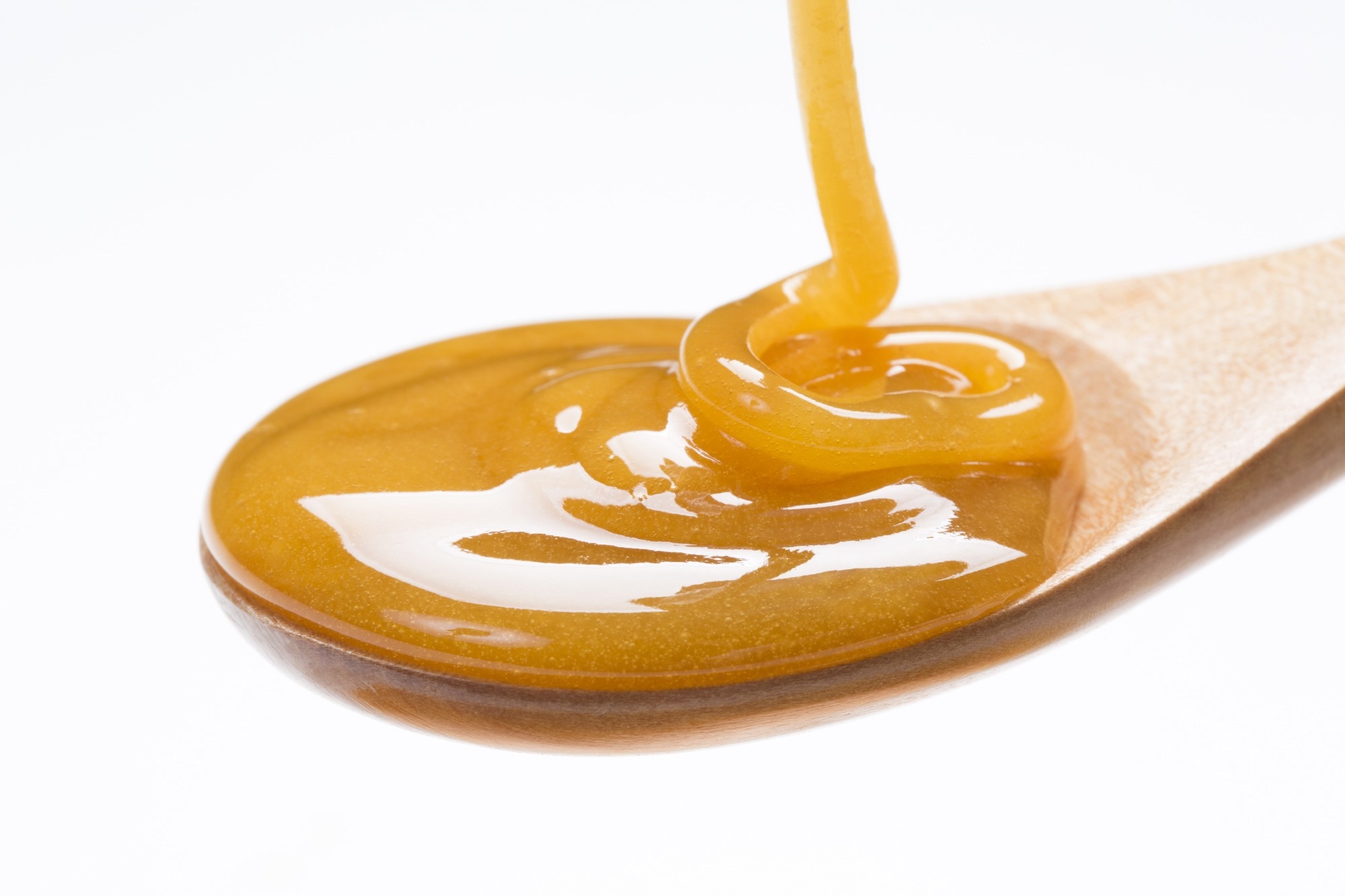In a recent study published in the journal Microbiology, researchers demonstrated that incorporating Manuka honey into nebulized antibiotic treatment could effectively combat respiratory infections due to Mycobacterium abscessusus, offering a novel new therapeutic strategy for M. abscessus management.
 Study: In vitro synergy between manuka honey and amikacin against Mycobacterium abscessus complex shows potential for nebulisation therapy. Image Credit: HikoPhotography / Shutterstock
Study: In vitro synergy between manuka honey and amikacin against Mycobacterium abscessus complex shows potential for nebulisation therapy. Image Credit: HikoPhotography / Shutterstock
Background
M. abscessus is an opportunistic pathogen causing lethal respiratory, skin, and soft tissue infections in patients with pre-existing lung conditions, such as cystic fibrosis and bronchiectasis. It is inherently drug-resistant, which makes it challenging to treat and manage aggressive pulmonary infections caused by it. The antimicrobial chemotherapy used to treat M. abscessus lasts over a year. It also results in severe side effects, including nausea, vomiting, hepatotoxicity, thrombocytopenia, and leucopenia.
In most cases, treatment is unsuccessful; also, patients opt out of the treatment. The success rate in those who adhere to the complete course of treatment is between 30 to 50% only. Since current treatment options are ineffective, researchers need to explore novel treatment strategies to combat M. abscessus infections and improve patient outcomes. One such area not yet explored for M. abscessus treatment is Manuka honey.
Manuka honey, derived from the Leptospermum spp., has antimicrobial activity due to methylglyoxal (MGO). Manuka honey, and non-manuka honey, have all been developed into medical-grade honey based on specific components of honey’s antimicrobial activity. Likewise, honey gel, honey-laced wound dressings, and nebulized honey are used for asthma treatment, which makes it a clinically viable option to explore as a treatment for M. abscessus.
About the study
In the present study, researchers screened four manuka honey samples, each with a different MGO rating, MGO40, MGO55, MGO70, and MGO83, against M. abscessus strain NCTC 13031 and 16 clinical isolates retrieved from patients with M. abscessus pulmonary infections. These clinical isolates had increased drug resistance, and previous studies have shown they remained unresponsive to frontline treatments. For control experiments, they used vegan honea.
The team stored all honey samples at room temperature before preparing one gram per ml stock of honey in sterile distilled water. Next, they filtered the honey samples using a 0.8 µm filter to remove larger particulates and sterilized them using a 0.22 µm filter.
The researchers used a micro broth dilution checkerboard assay to demonstrate in vitro synergy of manuka honey with amikacin. Amikacin is one of the frontline antibiotics used for treating M. abscessus infections. They validated the assay results using an in vitro inhalation model. This model simulated the combination of manuka honey and amikacin as a nebulization therapy.
Study findings
All four MGO grades of manuka honey inhibited M. abscessus, with MGO83 exhibiting improved minimum inhibitory concentrations (MIC) and MGO40 and MGO83. Both these samples had the best minimum bactericidal concentration (MBC). In addition, manuka honey exhibited bactericidal activity against NCTC 13031 strain and 16 drug-resistant clinical isolates.
Intriguingly, the MGO grade of manuka honey did not vastly impact the inhibitory effects of the honey. More importantly, higher drug resistance of clinical isolates of M. abscessus did not affect the efficacy of honey treatment. This finding indicated that while the antimicrobial activity of manuka honey was attributable to MGO, its active components worked together to overcome previous drug resistance mechanisms within the organism. Therefore, future studies should explore the other major components of manuka honey to elucidate the observed variations in its bactericidal activity.
One treatment for pulmonary M. abscessus infections involves using intravenous amikacin followed by inhaled amikacin. Since this treatment requires an exponentially higher dosage of inhaled amikacin than intravenous amikacin, it causes severe side effects, such as cough and dyspnea. Lowering the inhaled amikacin dosage could reduce side effects and improve patient outcomes.
An in vitro assessment of their combination therapy improved bactericidal efficacy against all four M. abscessus strains, regardless of MGO rating. Notably, this enhancement required only 0.037 g ml−1 of honey. In addition, another study showed that adding sub-inhibitory concentrations of manuka honey alongside tobramycin or colistin inhibited the growth of Pseudomonas aeruginosa isolates obtained from cystic fibrosis patients.
There is a lack of data for the maximum epithelial lining fluid concentration of nebulized honey. Researchers believe that MGO (in the manuka honey) allows easier penetration of amikacin into the cell membrane by exerting pressure, which then binds to the bacterial 30S ribosomal subunit causing protein synthesis inhibition. Notably, MG055 generated the highest reduction of amikacin dosage required. This honey sample with amikacin showed exceptional anti-mycobacterial activity in an in vitro inhalation model.
Conclusions
To date, studies have not documented any side effects of nebulized honey, whereas the side effects of amikacin are severe. Thus, lowering the amikacin dosage using manuka honey, in all likelihood, would lessen these side effects, resulting in better patient outcomes. In this way, inhaled/nebulized honey could be a promising treatment option for M. abscessus pulmonary infections. However, future studies should confirm additional cytotoxic effects of the proposed therapy in eukaryotic cell lines to confirm the current study findings.